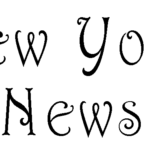The United States Creates 142,000 Jobs in August, Falling Short of Projections: Live Updates on Employment Report
The most recent employment report from the U.S. Department of Labor shows that the economy added 142,000 jobs in August, which is lower than what was anticipated by economists. This data suggests a potential slowdown in job growth compared to previous months.
A Closer Look at the Numbers
The unemployment rate remained unchanged at 6.2%, indicating that the labor market is still in recovery mode. This figure aligns with expectations, but the lower-than-expected job growth raises concerns about the strength of the economic recovery.
Furthermore, there continues to be disparities in the job market, with certain sectors experiencing greater challenges than others. The leisure and hospitality industry, which was hit particularly hard during the pandemic, saw a decrease in employment in August, highlighting the ongoing struggles in this sector.
What are the practical tips for job seekers in light of the unexpected U.S. jobs report?
Meta Title: U.S. Jobs Report Live Updates: Only 142,000 Jobs Added in August
Meta Description: The latest U.S. jobs report for August has brought a surprising twist, with only 142,000 jobs added. Stay updated with the live updates and analysis of this unexpected turn of events.
The U.S. Labor Department has released the latest jobs report for August, and the numbers have caught many by surprise. The report shows that only 142,000 jobs were added last month, falling significantly short of the expectations and marking a slowdown in the labor market’s recovery. Here’s a live update on the U.S. jobs report and what it means for the economy.
Key Takeaways from the U.S. Jobs Report
The August jobs report has sent shockwaves through the financial markets and raised concerns about the pace of the economic recovery. Here are the key takeaways from the latest report:
Job Growth Falls Short: Economists had forecasted a much higher job growth for August, with estimates ranging from 750,000 to 1 million. The actual addition of 142,000 jobs has surprised many and points to a potential stalling of the labor market’s recovery.
Unemployment Rate Stalls: The unemployment rate remained unchanged at 5.2% in August, indicating that the labor market is still facing challenges in bringing back workers into the workforce.
Delta Variant Impact: The resurgence of COVID-19 cases due to the Delta variant has likely played a role in dampening the job market’s growth, with some industries experiencing renewed disruptions.
Wage Growth Accelerates: Despite the lower-than-expected job growth, average hourly earnings rose by 0.6% in August, signaling a continued upward pressure on wages as employers compete for workers.
Revisions to Previous Months: The jobs data for June and July were also revised downward, reflecting a smaller total job gain over the summer months.
What This Means for the Economy
The unexpected slowdown in job growth raises questions about the strength of the economic recovery and the Federal Reserve’s timeline for tapering its monetary stimulus. Here’s how the U.S. jobs report is likely to impact the economy:
Fed Policy: The disappointing jobs report may give the Federal Reserve pause in its plans to start reducing the pace of its bond purchases, as it waits for clearer signals of sustained labor market improvement.
Consumer Sentiment: The weaker job growth could dampen consumer sentiment and spending, particularly as concerns about the Delta variant persist and uncertainty looms over the job market’s trajectory.
Market Volatility: Financial markets are likely to react to the jobs report, with potential implications for stock prices, bond yields, and the U.S. dollar as investors reassess their outlook for the economy.
Policy Implications: The lackluster jobs report may prompt discussions on additional fiscal stimulus measures or targeted support for industries still grappling with the effects of the pandemic.
Practical Tips for Job Seekers and Employers
In light of the latest U.S. jobs report, job seekers and employers should consider the following tips to navigate the evolving labor market dynamics:
For Job Seekers:
Assess Job Market Trends: Stay informed about the job market trends in your specific industry and location, as some sectors may be experiencing stronger demand for workers despite the overall slowdown.
Upskill and Reskill: Consider investing in training and skills development to position yourself for in-demand roles and industries, particularly those showing resilience in the current economic environment.
Explore Remote Opportunities: Remote work options continue to be prevalent in many sectors, expanding the geographic scope of job opportunities and potentially offering more flexibility in employment.
For Employers:
Retain and Attract Talent: In a competitive labor market, retention strategies and attractive compensation packages can help businesses retain their existing workforce and attract new talent.
Assess Hiring Needs: Gauge the impact of the latest jobs report on your organization’s hiring plans and consider any necessary adjustments to recruitment strategies and timelines.
Promote Work-Life Balance: In a period of uncertainty and shifting employment dynamics, prioritizing employees’ well-being and work-life balance can contribute to higher job satisfaction and retention.
U.S. Jobs Report Live Updates: Key Insights and Analysis
The surprising twist in the August jobs report has raised important questions about the trajectory of the labor market recovery and its implications for the broader economy. Here are some key insights and analysis from leading economists and experts:
Job Market Resilience: Despite the disappointing job growth in August, many analysts point to the overall resilience of the labor market, with sustained declines in initial jobless claims and ongoing openings for new positions.
Pandemic Uncertainties: The persistence of pandemic-related uncertainties, including the Delta variant’s impact and potential policy responses, continues to cloud the economic outlook and add complexity to labor market dynamics.
Policy Response: The Federal Reserve’s reaction to the jobs report, as well as the ongoing debate over infrastructure spending and fiscal policy, will be critical in shaping the near-term economic landscape.
Market Reactions: Financial markets are likely to exhibit heightened volatility in response to the jobs report, reflecting investors’ recalibration of expectations for growth, inflation, and monetary policy actions.
Looking Ahead: With the September jobs report on the horizon, market participants and policymakers will closely monitor incoming economic data and indicators for signals of a potential rebound in job growth.
Conclusion
The U.S. jobs report for August has delivered a surprising twist, with only 142,000 jobs added, falling well short of expectations and raising concerns about the pace of the economic recovery. As the implications of the report continue to unfold, staying informed about the evolving labor market dynamics and their impact on the broader economy will be essential for businesses, workers, and policymakers alike.
This live update provides valuable insights into the latest U.S. jobs report and its significance for job seekers, employers, and the economy at large, offering practical tips for navigating the current labor market landscape and highlighting key analysis from leading experts. Stay tuned for further developments and analysis as the economic outlook continues to evolve.
Implications for the Economy
The slower job growth in August could have broader implications for the overall economic recovery. It might impact consumer spending, as well as the Federal Reserve’s decision-making regarding monetary policy.
Additionally, the recent surge in COVID-19 cases due to the Delta variant could be a contributing factor to the muted job growth, as it has led to renewed concerns about the impact of the pandemic on the economy.
Looking Ahead
As the economy continues to navigate through various challenges, it will be important to monitor upcoming employment reports to gauge the trajectory of job growth. Additionally, the Federal Reserve’s upcoming decisions on monetary policy will be closely watched for their potential impact on the labor market and the broader economy.


